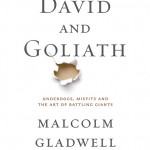[fusion_builder_container hundred_percent=”yes” overflow=”visible”][fusion_builder_row][fusion_builder_column type=”1_1″ background_position=”left top” background_color=”” border_size=”” border_color=”” border_style=”solid” spacing=”yes” background_image=”” background_repeat=”no-repeat” padding=”” margin_top=”0px” margin_bottom=”0px” class=”” id=”” animation_type=”” animation_speed=”0.3″ animation_direction=”left” hide_on_mobile=”no” center_content=”no” min_height=”none”]
Most of the readers and writers of The Educator’s Room would consider themselves more than “just teachers.” We’re ground movers, educational landscapers, and men and women who patch the faults of children and our profession. We also move some of our thoughts into actions, making us entrepreneurs of our profession. Certainly, we all don’t generate a sizable amount of income from it, but we do take risks to seek rewards. Likewise, not all of the “payouts” of these ventures can be considered failures if the dollars don’t follow – rather, we’re looking to change an evolving system.
We are all, in a sense, teacherpreneurs.
Teacherpreneurs, written by Barnett Berry, Ann Byrd, and Alan Wielder, seeks to capture the lives of “teachers who lead but don’t leave.” And it’s hard to blame them for using that as a subtitle. Indeed, when educators – teachers, administrators, professors, and others – have an idea on how to alter the face of education, they often end up leaving the field.
However, this book – and the program from the Center for Teaching Quality (CTQ) “Collaboratory” – focuses on a hybrid model of education. Teachers do what they always have for half-time, while the other half of it is spent innovating different components of education.
The Collaboratory – a portmanteau of the “collaboration” and “laboratory” – vetted its teacher candidates until it settled on a featured few:
- The first we meet is Noah, who teaches in the most poverty-stricken areas of Ecuador and seeks to shift the educational paradigm there
- Another is Jessica, a Colorado teacher who focused on “reciprocal mentoring” by continuing to create learning opportunities with staff and continually sharing / improving them
- Ariel, a New York City teacher, focused not just how to recruit teachers to the profession, but how to retain them and keep them empowered and inspired
- Stephen, a Brooklyn teacher, who refreshed curriculum by making it experiential rather than rote
- Renee, a teacher from the Mississippi delta and the creator of my favorite idea, sought to solve economic inequality and racial inequity in her hometown and schools where she teaches in the shadow of the Ku Klux Klan
- Shannon, an online teacher, who focused on how to revolutionize teacher-student online communication
- Jose, another NYC teacher, who built a brand for his classroom students to believe in
I really liked this book’s focus on moving education through 3 waves (traditional roles of leadership, instructional leadership, and PLCs) by adding a 4th wave. This 4th wave involves teachers creating their own “solutions to problems rather than just implementers of someone else’s,” which resonated with me. We are often guinea pigs for whichever “solution” is best to work, and we budge along begrudgingly, mostly because we’re good soldiers and we just want to be able to return to our classrooms and shut our door.
I also really enjoyed how the book mentioned barriers that teacher-leaders face. In fact, most readers will have to re-read that term in order for it to seem cogent. Yes, teachers – we are permitted to be leaders. We just have to have the time for it.
The CTQ and the authors of the book do a wonderful job inspiring readers as how they can become Teacherpreneurs, so much so that they built in our dream schedule that we can create for ourselves. They also envision “where we’ll be in 2030,” focusing on the age of the participants and the state of education by that time.
Another aspect of the book that I enjoyed is that most of the participants and the writers in general presented that “teacherpreneurialism” isn’t necessarily a new thing; indeed, it’s something we all do each and everyday, we just don’t have the time to create and solve as we’d like. There’s always too much paperwork, grading, parent phone calls, one-on-ones, meetings, study halls, etc, etc, etc to really change the face of education like we think we could. The Collaboratory was able to pick up funds to provide districts money to let their teachers teach part time, and lead the other.
In contrast, one issue I have with Teacherpreneurs is that it really relies on advancing teachers into becoming Nationally Board Certified Teachers (NBCT). While I’ve personally explored that avenue, I don’t necessarily think its the only way to create teacherpreneurs, that being teachers capable of making tectonic paradigm shifts in education. Certainly it provides an excellent credential, but it is not the only means. This is by no means a “shot” at NBCT – I think it is an honorable, great program. I am just highlighting that, throughout the book, it is emphasized in each case.
For example, Fran Warren, the CEO of The Educator’s Room, decided that teachers’ voices were absent from the vast education discussion. Sure, any reader of public education issues can find fantastic articles at ASCD, Edutopia, and the Huffington Post, among others. But there was no place for teachers – and only teachers – to hang their opinions with their hats. From that teacherpreneurial idea, this online magazine was born.
In addition, much of Teacherpreneurs focuses on an ideal – something that is out of the grasp of so many teachers. This is more a sad reflection on the state of how we treat our nation’s teachers than the words of this book, but I know if I personally approached my district’s superintendent or school board, they’d laugh me out of a room if I proposed spending half the day leading rather than teaching. Budget cuts only exasperate this chronic cauldron of callousness and coolness towards the idea of being a teacherpreneur.
Despite this, I thoroughly enjoyed this book and recommend it for any and all teachers. It is one of the best reads for those seeking to find their own sense of self-inspiration. This book will help you turn your inward focus outward, permitting teachers of all sizes, ages, and geographic areas to focus on the problems in their realm of education and help them find solutions.
Disclaimer: This book was the possession of the reviewer. Neither The Educator’s Room nor the reviewer received any compensation for this review. The opinions contained in this review are those of the reviewer alone and were written free of any obligation or agreement with the publisher. If you have any questions regarding book reviews, see our full disclaimer or contact The Educator’s Room Book Review Editor.[/fusion_builder_column][/fusion_builder_row][/fusion_builder_container]





